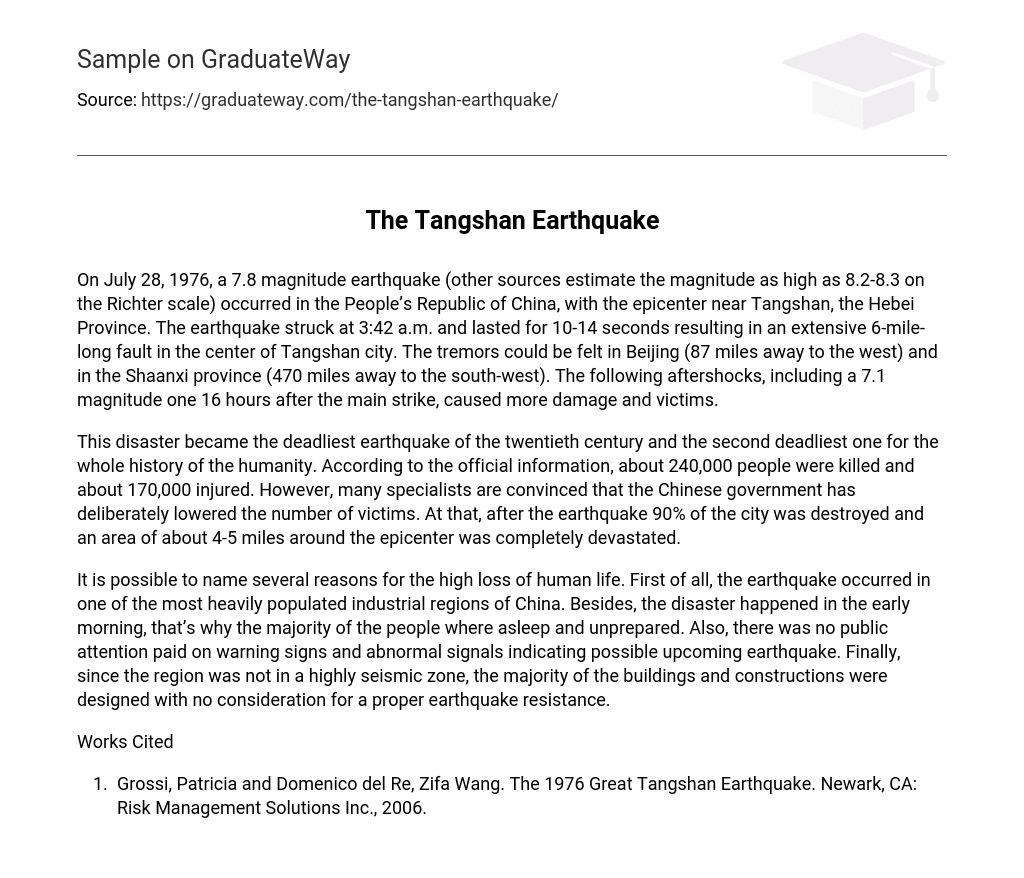On July 28, 1976, a 7.8 magnitude earthquake (other sources estimate the magnitude as high as 8.2-8.3 on the Richter scale) occurred in the People’s Republic of China, with the epicenter near Tangshan, the Hebei Province. The earthquake struck at 3:42 a.m. and lasted for 10-14 seconds resulting in an extensive 6-mile-long fault in the center of Tangshan city. The tremors could be felt in Beijing (87 miles away to the west) and in the Shaanxi province (470 miles away to the south-west). The following aftershocks, including a 7.1 magnitude one 16 hours after the main strike, caused more damage and victims.
This disaster became the deadliest earthquake of the twentieth century and the second deadliest one for the whole history of the humanity. According to the official information, about 240,000 people were killed and about 170,000 injured. However, many specialists are convinced that the Chinese government has deliberately lowered the number of victims. At that, after the earthquake 90% of the city was destroyed and an area of about 4-5 miles around the epicenter was completely devastated.
It is possible to name several reasons for the high loss of human life. First of all, the earthquake occurred in one of the most heavily populated industrial regions of China. Besides, the disaster happened in the early morning, that’s why the majority of the people where asleep and unprepared. Also, there was no public attention paid on warning signs and abnormal signals indicating possible upcoming earthquake. Finally, since the region was not in a highly seismic zone, the majority of the buildings and constructions were designed with no consideration for a proper earthquake resistance.
Works Cited
- Grossi, Patricia and Domenico del Re, Zifa Wang. The 1976 Great Tangshan Earthquake. Newark, CA: Risk Management Solutions Inc., 2006.





